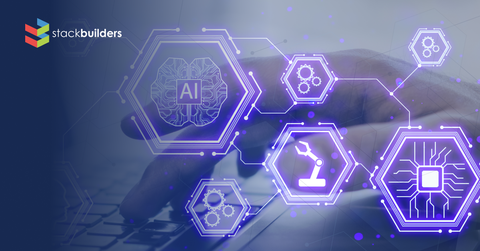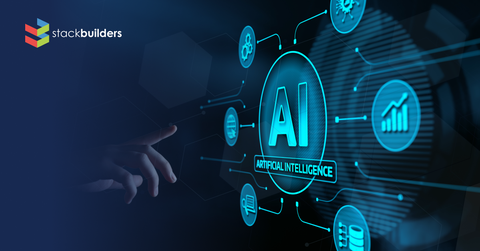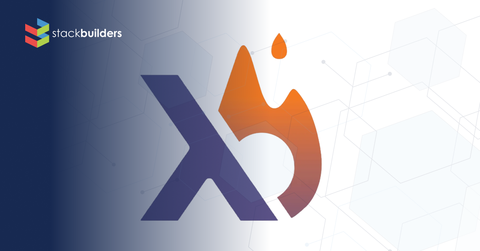Introduction
In today’s competitive landscape, companies are under constant pressure to operate faster, leaner, and smarter. Traditional automation helped streamline repetitive tasks, but it often struggled with complex tasks that involve variability, changing environments, or reasoning through multiple steps.
That’s where AI-powered process automation steps in. By combining automation with intelligent, adaptive systems, businesses can now transform their operations and unlock entirely new growth opportunities. From conversational AI agents that enhance customer service to advanced models that analyze how your competitors are performing and identify market trends, the potential is immense.
In this post, we’ll explore how businesses can move beyond traditional workflows and embrace AI tools as a strategic partner to enhance efficiency and profitability. Whether you are looking to modernize operations or gain a competitive advantage, the shift to AI-driven automation is no longer optional.
Current AI State in Business
AI adoption is no longer a bet on the future. It’s already shaping how modern businesses operate.
According to a survey conducted by McKinsey, over 70% of companies have integrated at least one form of AI into their processes within the past year. The top performers are not only automating tasks but also entire workflows. From finance and logistics to customer service and marketing, intelligent automation is becoming a core driver of operational efficiency.
So why should you care? Because the gap is widening. Companies leveraging AI are reducing operational costs, accelerating decision making, and launching new products faster.
A study published in the International Journal on Science and Technology highlights this impact, reporting a 30% decrease in operational costs for companies after implementing AI.
Meanwhile, those sticking to manual or rigid systems are falling behind both in efficiency and in their ability to respond to market shifts.
If your business is aiming to scale and stay competitive, AI is just the next logical step.
AI Tools That Are Changing How We Work
The latest generation of AI tools isn’t just assisting employees, it’s boosting productivity across team workflows.
Here are a few examples already delivering real value across industries:
- Chatbot Assistants: AI chatbots now resolve customer questions 24/7, handle bookings, guide users through processes, and escalate only when needed. This means faster response times, lower support costs, and better customer satisfaction. These assistants can also be personalized quickly to your own business vision and goals.
- Voice Assistants: These are already evolving at a rapid pace and have become useful for automating customer interviews since they can address their needs by analyzing the context given during the conversation and researching all relevant data on the web. In the workplace, simple voice commands can schedule meetings or navigate through complex systems easily.
- Competitive analysis research: Lately, many AI chat apps have integrated the option to research on the web before giving an output. They are no longer restricted to the data they were trained on. Instead of assigning teams to track competitors or trends manually, you can tell an AI chat app to research the latest information on the internet, and deliver real-time reports that give decision makers a huge help in taking the next steps.
Starting your AI Journey
You don’t need a full-scale transformation to start seeing value from AI. The first step is identifying where your team is losing time or missing opportunities.
Look for tasks that are:
- Repetitive and manual
- Data-heavy
- Slowing down decision-making
That’s your entry point. Maybe it’s automating support tickets with a chatbot, or maybe it’s using AI to generate reports or research into publicly available competitor data. Small, targeted use cases can unlock value fast and prove the ROI before you scale.
According to a case study across large companies:
- Target saw a 35% increase in average order value after implementing an AI-powered shopping assistant
- Nike experienced a 25% increase in conversions after introducing a virtual stylist AI agent
- JPMorgan Chase reduced operational costs by 20% after implementing AI-powered wealth management advisors
The goal isn’t to automate everything overnight. It's to solve one problem, get results, and build from there.
Measuring your success
To know if AI is delivering value, you need to track the right outcomes and not just the activity.
The following metrics can help you get started:
- Time saved: How many hours per week has automation freed up?
- Response times: Are customer issues being resolved faster?
- Team output: Are departments delivering more with the same or fewer blockers?
Don’t stop at numbers. Pay attention to what your team is now able to do with that reclaimed time. Are they focusing on growth strategy, innovation, or chasing routine tasks?
The shift from execution to impact is where AI proves its real worth.
Conclusion
AI-powered process automation is a strategic move that is being adopted more and more each day. It boosts efficiency, reduces costs, and unlocks new growth opportunities. The tools are ready, the use cases are proven (Target, Nike, JPMorgan Chase), and the competitive edge is real.
The businesses that act now will lead. Those who wait will play catch-up.
If you are exploring how to bring AI into your operations or want expert help identifying where to start, our team is here to make it happen fast, focused, and built for results. Let’s build together.







